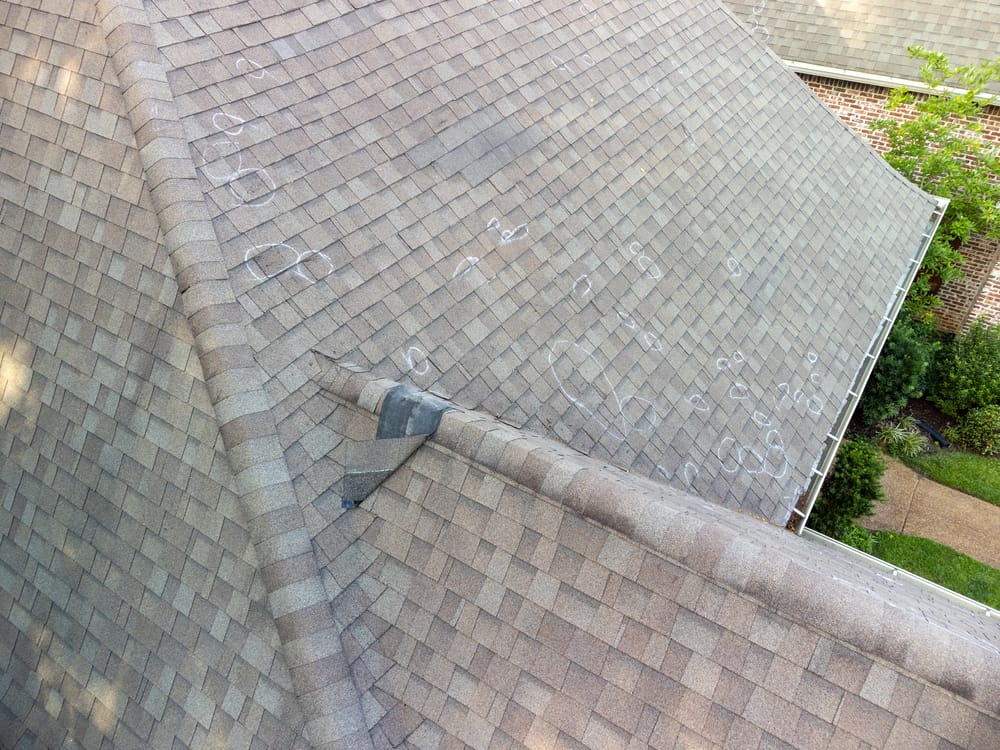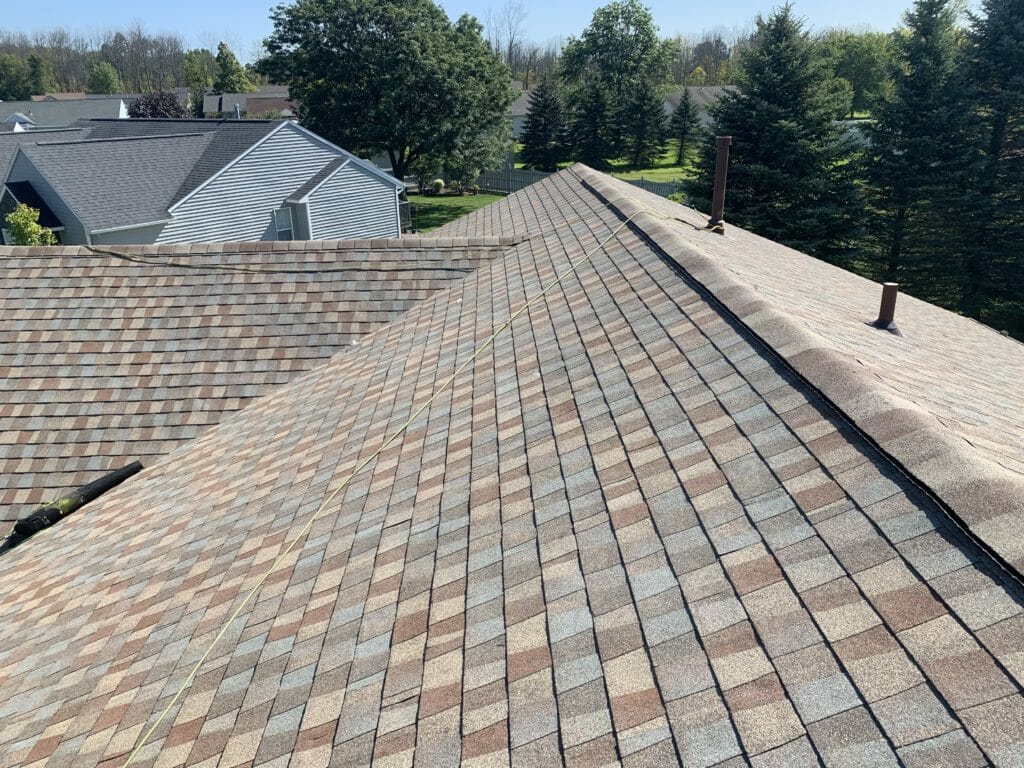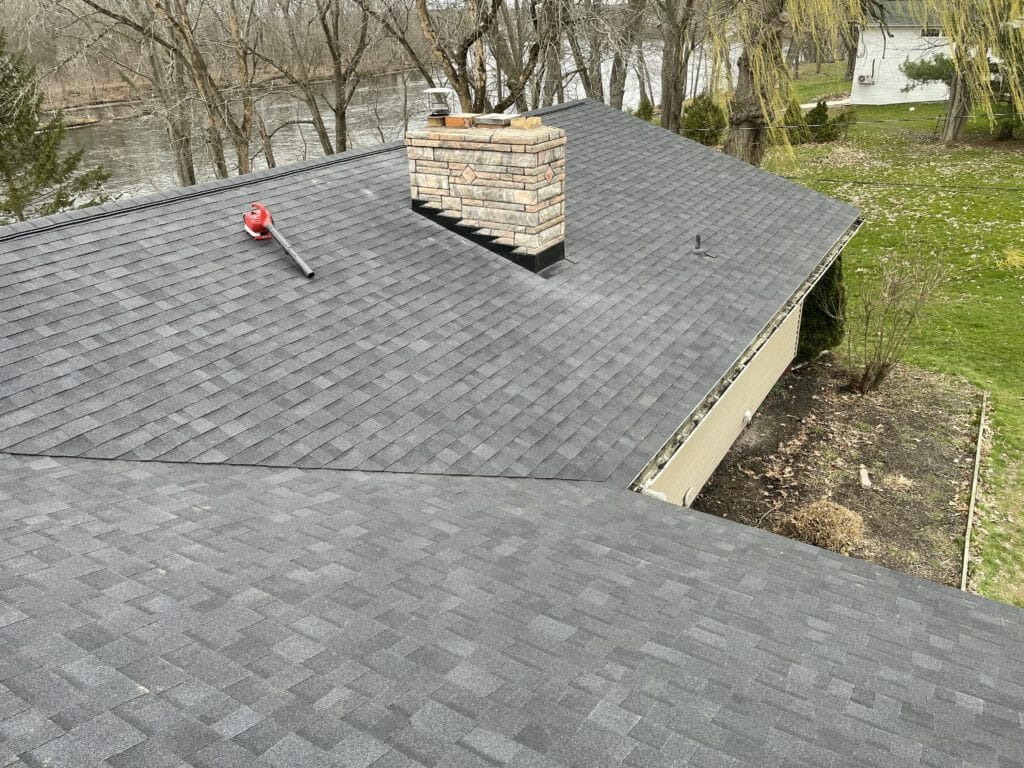The roof over your head keeps you safe from the elements, but what happens when a storm hits and leaves behind a trail of destruction? Suddenly, you’re dealing with missing shingles, water leaks, and a whole lot of stress. But don’t panic! With the right knowledge and a few deep breaths, you can tackle storm damage roof repair like a pro.
I’ve been there, staring up at my battered roof after a particularly nasty storm, wondering where to even begin. It might seem super tough at the moment. Trust me though; you’re up for the challenge. In this post, we’ll walk through the process of assessing the damage, working with your insurance company, and finding the right roofing contractor to get your home back to tip-top shape.
Table Of Contents:
- Assess the Severity of Storm Damage on Your Roof
- Understand the Consequences of Neglecting Roof Repairs
- Take the Right Steps for Proper Storm Damage Roof Repair
- Navigate the Insurance Claim Process for Storm Damage
- Avoid Common Mistakes When Dealing with Storm Damage
- Conclusion
Assess the Severity of Storm Damage on Your Roof
The roof of your house protects the interior of your home and all valuable items found within it from severe storms. These protective structures are engineered to withstand harsh weather conditions but powerful winds, hail, and debris can wreak havoc. The extent of the damage may not be easily visible to the naked eye, so it is essential to check the roof after a storm to inspect for damage. While there are certain damages that you can fix quickly, there are instances when you should call an expert to evaluate the damage and provide the necessary repairs.
Inspect the Roof for Ponding
After a heavy rainstorm, it’s crucial to check your roof for any signs of ponding or standing water. Ponding water can lead to serious roof damage if left unaddressed. Look for any areas where water seems to be collecting and not draining properly. This could indicate a problem with your roof’s slope or drainage system. Ignoring ponding water can result in leaks, water damage, and even structural issues over time. High winds can cause significant damage to your roof, especially if you have missing or loose shingles. After a windstorm, take a walk around your property and look for any shingle damage or debris that may have blown onto your roof. If you notice any missing shingles or visible damage to your roof deck, it’s important to have a professional assess the situation as soon as possible. Wind damage can quickly lead to leaks and further deterioration if not addressed promptly.
Inspect for Water Damage
Even if you don’t see any obvious signs of storm damage on your roof’s exterior, it’s essential to check your attic and ceilings for any indications of water intrusion. Look for water stains, mold growth, or musty odors inside your home. These can all be signs that your roof has sustained damage and is allowing water to seep through. Catching water damage early can help prevent more extensive and costly repairs down the line.
Understand the Consequences of Neglecting Roof Repairs
It’s important to get storm-damaged roof repairs as soon as possible. Your roof is your home’s first line of defense. After a storm, it should be one of the first areas you inspect for signs of damage. If you notice any signs of storm damage on your roof, make sure to have repairs done as soon as possible. Neglecting necessary roof repairs after a storm can significantly decrease your roof’s overall durability and lifespan. Even seemingly minor damage, like a few missing shingles, can allow moisture to penetrate your roof’s underlayment and cause rot or mold growth. Over time, this damage will spread and weaken your roof’s structure, leading to more extensive and expensive repairs. By addressing storm damage promptly, you can help extend your roof’s life and avoid premature replacement.
Reduced Property Values
In addition to the practical consequences of neglecting roof repairs, there are also financial implications to consider. A damaged or poorly maintained roof can significantly reduce your property’s value. If you decide to sell your home, potential buyers will likely factor in the condition of your roof when making an offer. A roof in disrepair can be a major red flag and may lead to lower offers or even deter buyers altogether. Investing in timely repairs can help maintain your home’s value and attractiveness on the market.
Take the Right Steps for Proper Storm Damage Roof Repair
After hours of howling winds and lashing rains, you may be afraid to look at what a storm has done to your home. But the first step to take for roofing storm damage repair is to assess the problem. These tips will help you identify storm damage and walk you through the process of getting your home back to its old self again. You can attend to small leaks, punctures, and cracks with epoxy or roofing cement. You can also cover missing shingles and secure loose shingles with replacement shingles and roofing nails. Be careful, as it’s easy to puncture the wrong areas. Consider using rubber sealant if you’re not confident using nails. Remember that these approaches are all temporary repairs, and you should hire a roofing company for permanent fixes.
Contact Your Insurance Company
After a storm, roof damage can be a stressful experience. It can be difficult to find the right answers. However, homeowner’s insurance will help you get through the insurance claim process. Make sure you have all the necessary documentation and contact information for your insurance company at hand. Remember to not delay. The longer you wait to respond, the chances that your insurance may not be able to cover it completely.
Find and Hire a Roofing Contractor for Repairs
By hiring the right roofing contractor you will not waste time getting estimates. As homeowners, it is essential to hire a roofing professional to assess the damage caused by severe weather. A trustworthy professional will provide a free inspection to determine the extent of damage on your roof and give a free estimate. As soon as the repairs are completed, your roof is more likely to be ready for the next storm.
Navigate the Insurance Claim Process for Storm Damage
Call your insurance company and open a claim as soon as you notice storm damage. Document the damage with your phone’s camera. The insurance adjuster will usually send an inspector to assess the damage to begin the claims process. The inspector will write up a formal report to share with you and the insurance company.
Understand Your Insurance Policy Coverage
It’s crucial to understand what your homeowner’s insurance policy covers before filing a claim for storm damage. Review your policy documents or contact your insurance provider directly to clarify any questions you may have. Some policies may have specific exclusions or limitations on coverage for certain types of damage. Knowing what to expect can help you navigate the claims process more smoothly and avoid any surprises down the line. Once you’ve filed a claim, your insurance company will assign an adjuster to assess the damage to your roof. It’s important to work closely with your adjuster throughout the claims process. Provide them with any documentation or evidence of the damage, including photos and repair estimates from your roofing contractor. Be available to answer any questions they may have and keep them updated on the progress of your repairs.
Be Patient with the Claims Process
Navigating an insurance claim for storm damage can be a lengthy and sometimes frustrating process. It’s important to remain patient and persistent throughout the claims process. Keep detailed records of all correspondence with your insurance company and contractor, and don’t hesitate to follow up if you feel your claim is not being handled properly. Remember, your insurance company is required by your policy to repair or replace the damage to pre-storm conditions.
Avoid Common Mistakes When Dealing with Storm Damage
The best way to know whether to file a claim for your roof damage and to find out if you have a totaled roof is to have a professional Fort Worth roofing contractor inspect your roof first. Most roofing contractors are familiar with how the different insurance companies determine whether a roof is totaled. They can make an accurate assessment of exactly how much damage there is and what it will cost to repair or replace before you call your insurance company.
Don’t Let Anyone on Your Roof Until You’ve Vetted Them
After a severe storm, you may have multiple contractors knocking on your door offering to inspect or repair your roof. While it may be tempting to accept the first offer of help, it’s crucial to vet any contractor before allowing them access to your property. Unfortunately, some unscrupulous individuals known as “storm chasers” take advantage of homeowners in the aftermath of a storm. These individuals often perform subpar work or take payment without completing repairs. Always ask for references, proof of insurance, and proper licensing before hiring a contractor.
Don’t Go Up on a Roof That’s Sagging or Damaged
If you suspect your roof has sustained significant damage, it’s essential to resist the urge to climb up and inspect it yourself. A sagging or damaged roof can be incredibly dangerous and may not support your weight. Instead, call a local roofing contractor with the proper safety equipment and expertise to assess the damage safely. Trying to DIY repairs on a compromised roof can lead to serious injury or even death.
Don’t Hire the First Person to Knock on Your Door
In the aftermath of a storm, you may receive unsolicited offers from contractors promising quick repairs at a discount. While it may be tempting to jump on these offers, it’s essential to do your due diligence before hiring anyone. Take the time to research roofing companies in your area, read reviews, and gather multiple estimates. A reputable contractor will never pressure you to make a decision on the spot and will be happy to provide references and proof of insurance. Don’t let the stress of storm damage lead you to make a hasty decision you may regret later.
After a storm, inspect your roof for water collection, wind damage, and internal signs of leaks. Quick fixes can minimize further harm but call a pro for major repairs. Contact insurance promptly to cover costs and hire a trusted contractor to get your roof back in shape.
Conclusion
Storm damage roof repair can feel like an uphill battle, but armed with the right information and a trustworthy roofing contractor, you can come out on top. Remember to document everything, work closely with your insurance company, and don’t be afraid to ask questions along the way.
Your roof is your home’s first line of defense against the elements, so don’t put off those repairs. Get the process started as soon as possible to prevent further damage and ensure your family stays safe and dry. You’ve got this!



